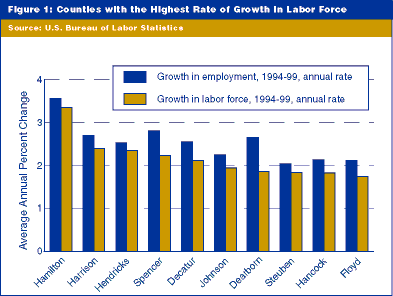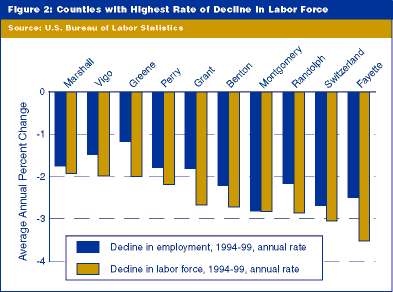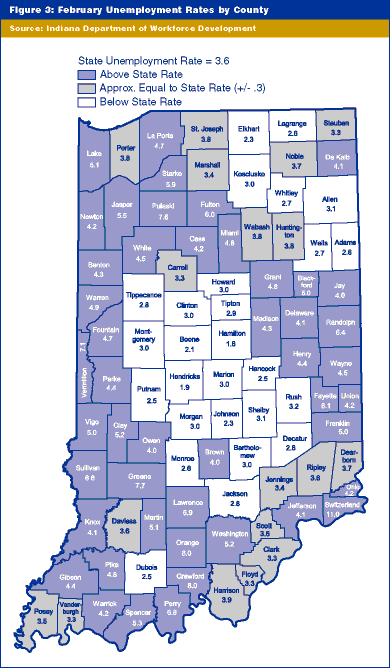Unemployment Rates May Influence the Labor Market
Indiana's rate of unemployment is among the lowest in the nation. In February, the statewide rate was 3.6%, compared to the national average of 4.4%. Sixteen states had a lower unemployment rate than Indiana.
It's good news that so few people remain jobless in Indiana. But companies looking for additional staff sometimes find a shortage of applicants. An important factor is the growth pattern in the state's labor force. From 1994 through 1999, Indiana's labor force—the number of people who either are working or are unemployed but looking for work—has grown 1%. The number of employed people, however, has grown nearly 3% over the same five-year period.

As a result, the number of unemployed Hoosiers has fallen steadily. In December 1994, Indiana reported 140,336 unemployed workers. By the end of 1999, out of a total labor force of more than 3 million, only 89,145 remained unemployed.
The numbers are just as dramatic at the county level. From 1994 through 1999, the growth rate of employment exceeded the growth rate of the labor force in every county except one (Pulaski). Even in counties where the labor force grew rapidly, it did not keep up with the growth in employed people. The growth leader was Hamilton County, where the labor force expanded by an average of 3.4% per year. Yet employment climbed 3.6% per year.
Of course, not all counties experienced a growing labor force.

From 1994 through 1999, 37 Indiana counties averaged a small annual decline in their labor forces. But the number of employed residents did not decline as quickly, so even these counties saw the number of unemployed workers shrink.

